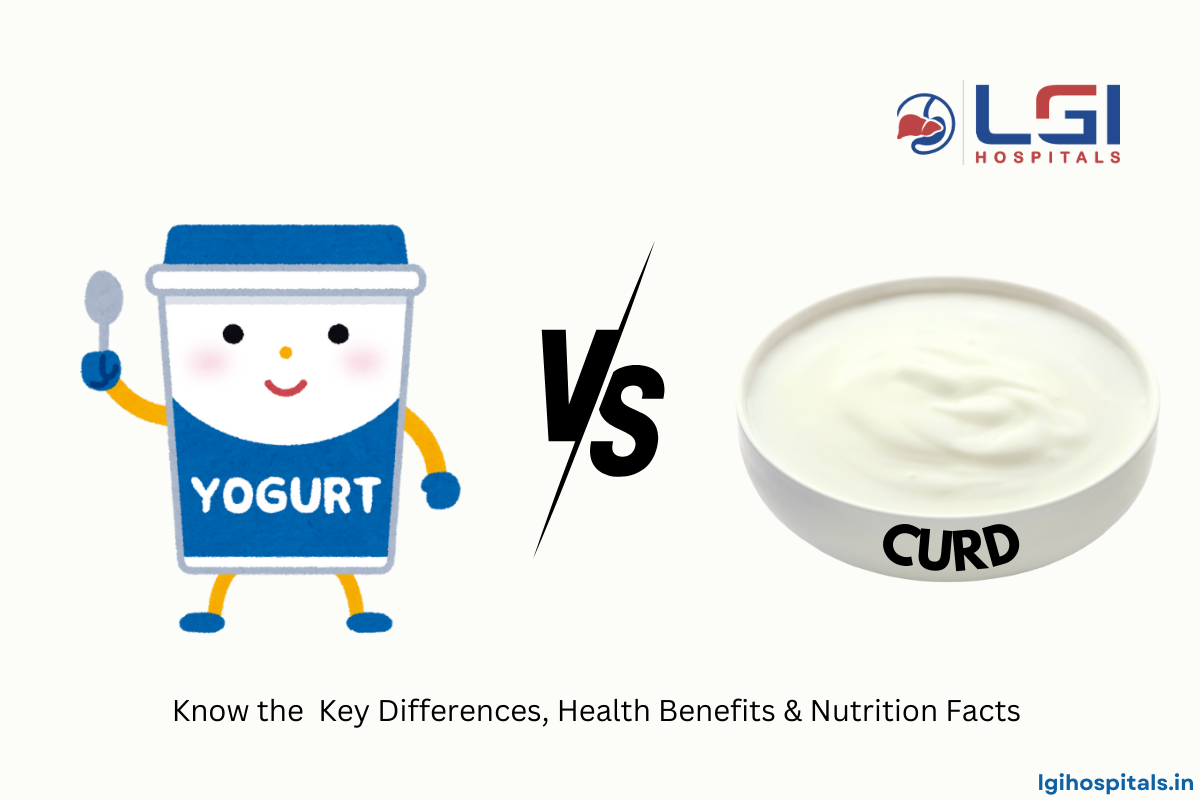When it comes to dairy products, yogurt and curd are often used interchangeably, but they have distinct differences in preparation, nutritional value, and health benefits. Understanding these differences can help you make an informed choice for your diet. In this blog, we will explore the key differences between yogurt and curd in detail.
1. Method of Preparation of Yogurt and Curd
Curd: Curd is made by adding a small portion of previously made curd or any acidic substance (like lemon juice or vinegar) to warm milk. The natural bacteria present in the milk help in fermentation, resulting in curd.
Yogurt: Yogurt is prepared by introducing specific bacterial strains, such as Lactobacillus bulgaricus and Streptococcus thermophilus, into pasteurized milk. These bacteria help in controlled fermentation, giving yogurt its distinct texture and probiotic properties.
2. Bacterial Composition
Curd: The bacterial strains in curd vary depending on the environment and the starter used. It contains beneficial bacteria, but the composition is not standardized.
Yogurt: Yogurt contains well-defined probiotic bacteria that aid digestion and gut health. Since it is produced under controlled conditions, the bacterial strains are more stable and consistent.
3. Nutritional Classification of curd and yogurt per 100g
| Nutrient | Curd (per 100g) | Yogurt (per 100g) |
|---|---|---|
| Calories | 98 kcal | 61 kcal |
| Protein | 3.1 g | 5.3 g |
| Fat | 4.3 g | 3.3 g |
| Carbohydrates | 4.0 g | 4.7 g |
| Calcium | 85 mg | 110 mg |
| Probiotics | Varies | High |
4. Health Benefits
Curd: Curd is rich in calcium, protein, and vitamins. It aids digestion and helps maintain gut health. However, since its bacterial composition is not fixed, its probiotic benefits may not be as effective as yogurt.
Yogurt: Due to its high probiotic content, yogurt promotes gut health, strengthens immunity, and improves digestion. Some yogurt varieties are fortified with additional nutrients like vitamin D and probiotics for added health benefits.
5. Lactose Content
Curd: The natural fermentation process in curd breaks down some lactose, making it easier to digest than milk, but it may still contain some lactose.
Yogurt: Yogurt contains live bacterial cultures that further aid in lactose digestion, making it a better option for individuals with lactose intolerance.
6. Texture and Taste
Curd: Curd has a softer, grainy texture and a mild tangy taste.
Yogurt: Yogurt has a smooth and creamy texture, with a slightly more pronounced tangy flavor due to controlled fermentation.
7. Commercial Availability
Curd: Curd is often homemade in Indian households and is not commonly available in packaged form.
Yogurt: Yogurt is widely available in supermarkets in different varieties, including flavored, Greek, and probiotic-rich versions.
While curd and yogurt are both dairy products that offer several health benefits, they differ in terms of preparation, bacterial composition, and probiotic content. If you are looking for a consistent source of probiotics, yogurt is a better choice. However, if you prefer a natural and homemade option, curd is a great alternative. Including either in your diet can contribute to better digestion and overall health.

